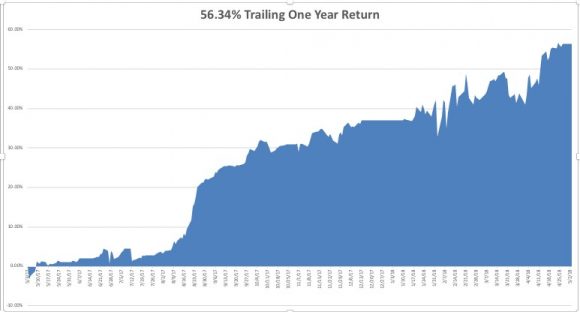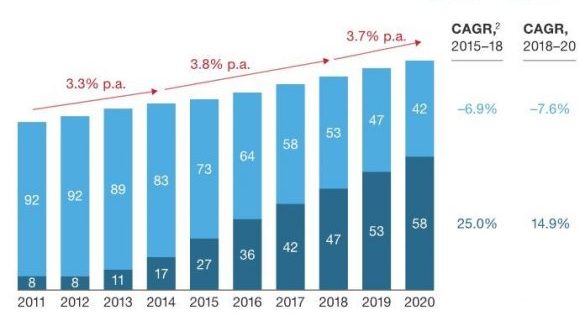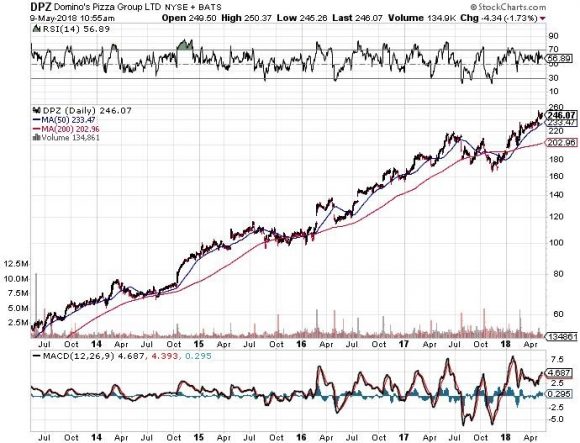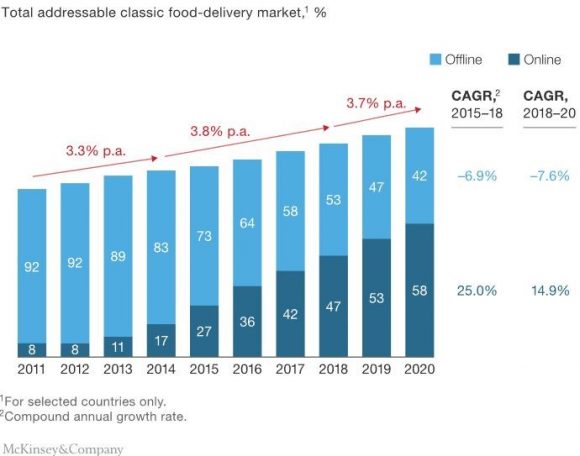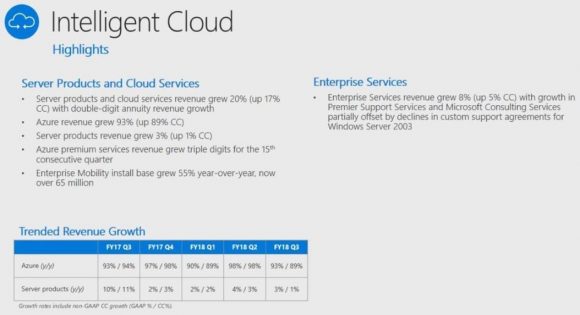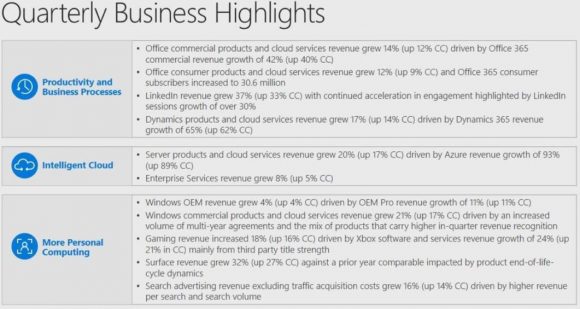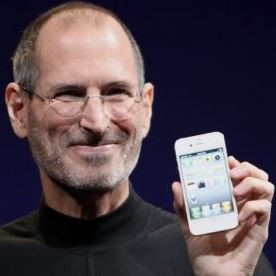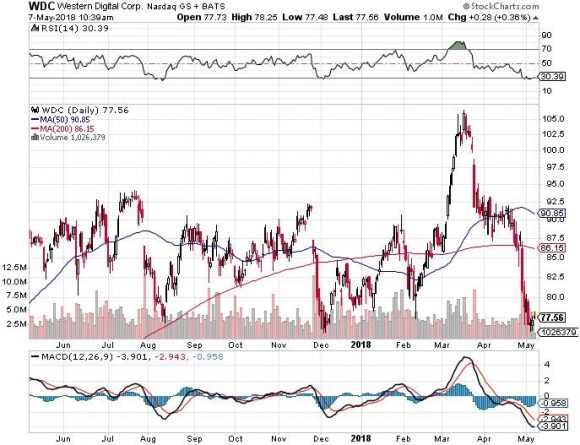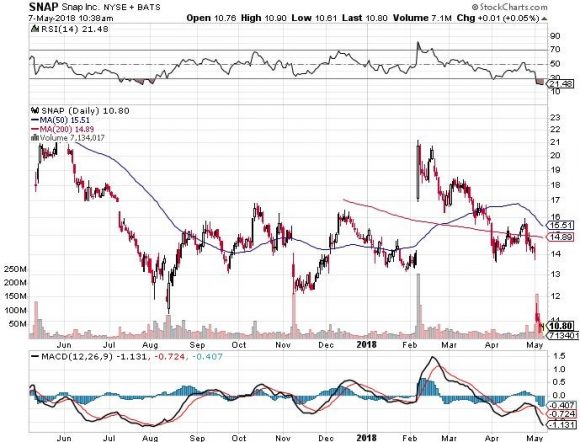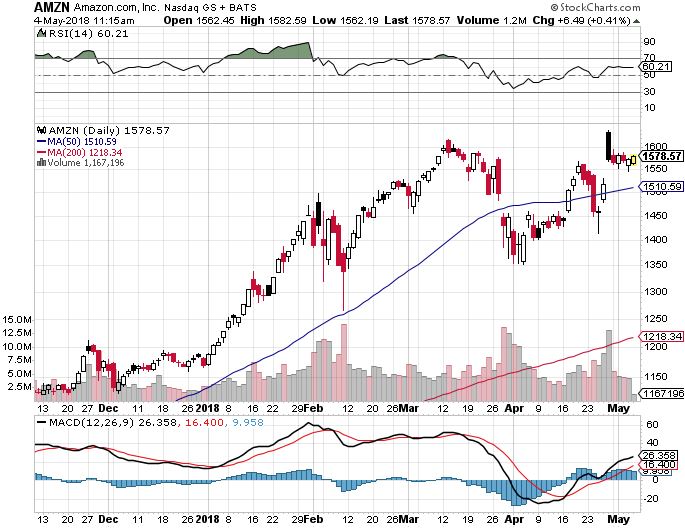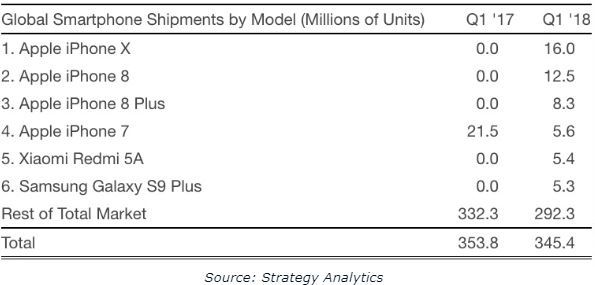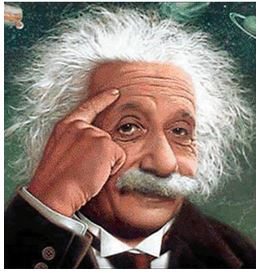Mad Hedge Technology Letter
May 10, 2018
Fiat Lux
Featured Trade:
(WHO'S TRYING TO BREAK INTO YOUR HOME NOW?),
(GRUB), (DPZ), (AMZN), (BABA), (YUM), (YELP), (MS)
In our never-ending quest to upgrade our customer service we will be changing our telephone numbers. Effective today, you can reach us at 201-858-8051, or 888-520-8616.
If Nancy is not in, the call will automatically roll over to any of a half dozen other Mad Hedge Fund Trader staff. We do get overwhelmed sometimes when the market is moving, so be sure to leave a voice mail if you can't get through. Your call will be returned shortly.
With our year-to-date performance up to 19.30%, our trailing one-year return at an eye-popping 56.34%, and our eight-year record to a new all-time high of 295.77%, business is booming.
That works out to an average annualized report of 35.14%. It doesn't get any better than that.
The Mad Hedge Technology Letter has been a spectacular success, with a 90% success rate on Trade Alerts. Having access to an extra 60 hours a week of technology research is also boosting our overall performance.
Many thanks for your support.
Good luck and good trading.
John Thomas
CEO & Publisher
The Diary of a Mad Hedge Fund Trader
Let Me Do the Heavy Lifting for You
Penetrating the home is the holy grail for tech companies, and soon the smart home will be full of gizmos and gadgets that will accompany Alexa.
Not so fast.
Before we enter the abode, there is a war taking place right before our eyes.
The last mile.
This industry focuses on monetizing the transportation route to people's doorsteps whether its food delivery, ride-shares, or a dog-walking app.
The intense obsession with this last mile stems from the shift in consumers' behavior because of online commerce.
People just aren't going out and buying stuff anymore like they used to do.
Particularly, Millennials have a pension for binge-watching Netflix while gorging on food deliveries.
In the current climate, brick-and-mortar's future prospects look bleak as foot traffic disappears and mega-malls shutter at an accelerating rate.
As a last resort, companies have no choice but to evolve, reinvent themselves, and execute a digital strategy based on fast fulfillment through a smartphone app to attract new transactions.
Enter the food delivery industry.
China's food delivery industry has matured faster than America's food delivery industry. And precious pearls of wisdom can be gleaned by the developments in China.
The Chinese food delivery industry is a $32 billion industry compared to a $5 billion industry in America.
Consolidation ran rampant in the early days while the migration to mobile was more pronounced in China. The multiple players burning cash faster than Elon Musk were subsidized by private funds.
Then Tencent and Alibaba (BABA) snapped up the last two remaining combatants resulting in a blossoming of a new duopoly.
Alibaba's Ele.me commands about half the market share in China while Tencent's Meituan-Dianping has a 43% share.
Meituan-Dianping is valued at $30 billion at the last stage of fundraising making it the fourth biggest unicorn in the world.
The food delivery industry could gradually mirror the situation in China, but America is still in its nascent stage, and the industry still offers viable growth chances for the participants.
The industry leader is Grubhub and it has been able to avoid the insane cash burn with which Chinese food deliverers grappled.
Shockingly, Grubhub turns a profit showing how last mile delivery in China has been reduced to a data grab.
The margins are juicier stateside.
On March 1, 2017, Grubhub's shares were trading at $33. Fast-forward to today and the shares are doing extraordinarily well, topping $102 giving investors more than a 300% return on capital in more than a year.
Grubhub was able to perform this feat in the face of harsh downgrades caused by Amazon's epic rise as the No. 4 player.
Numerous Amazon induced sell-offs could not hold back the stock with each stock dump being an attractive entry point.
Morgan Stanley's (MS) Brian Nowak went neutral on the stock in June 2017 and issued a price target between a range of $43 and $47 because of enhanced competition.
The analysts were all wrong again.
Grubhub has secured 34% of the market share followed by Uber Eats at 20% and Amazon at 11%. The third player was Eat24, which was recently acquired by Grubhub bolstering its market position an additional 16% to 50%.
The key metric for Grubhub is DAG - Daily Active Grubs.
This number was up 35% YOY to 437,000. Management has highlighted Tier 2 and Tier 3 cities as noticeable growth levers, and the Tier 1 cities such as New York and Chicago remain solid.
The rampant growth resulted in $233 million for the quarter, which is up 49% YOY. The integration of Eat24 will result in cost efficiencies and synergies across its operation.
Grubhub also entered into a partnership with online restaurant review platform Yelp (YELP) integrating the Grubhub platform onto the Yelp platform.
Actions speak volumes and aggressive tactics securing further market share gains are required to stave off Amazon whose rapid ascent has management's nerves hanging by a thread.
Despite being defensive in nature, the Yelp and Eat24 deals should give Grubhub a wider digital footprint stimulating business.
Grubhub also agreed to a deal with Yum! Brands (YUM) to lure premium restaurant assets such as KFC and Taco Bell into the Grubhub ecosphere.
The company has many irons in the fire and will not rest on its laurels.
After last quarter, Grubhub tallied up 15.1 million active diners, which is up 72% YOY. Annual guidance came in at between $930 million to $965 million.
To put the diminutive size in perspective, Grubhub liaises with 80,000 restaurants while Ele.me in China served 1.2 million restaurants.
Rough estimates show that 11% of Americans will use food delivery apps by 2020.
The nascent industry in America has a long runway ahead as the American consumer has been slower than the Chinese to adopt a thoroughly digital life.
This will all change.
Amazon is swiftly ramping up its food delivery business in conjunction with food ordering platform Olo based in New York. Outsourcing back-end support and partnering with Olo is a sign that Amazon sees this as a side job.
Amazon is still in the process of blending in Whole Foods within the existing framework of the company. Last mile food delivery is not a pure Amazon type of business.
Any potential business Amazon hopes to disrupt is leveraged by advantages in execution of volume (using state-of-the-art fulfillment centers) and low margins.
Thus, groceries fit these criteria to a T. However, value-added food meals delivered to the home cannot take advantage of the expensive fulfillment centers because the products' main point of transport is the restaurant's kitchen.
The analysts' bearish calls revolve around the grim margin prospects.
They could be correct, but the timing of the call is too early.
Yes, the opportunity to ruin margins is there for the taking in this industry.
Grubhub earned $99 million off of a miniscule $683 million of revenue in 2017, and technological innovations will devour margins to the bone.
After the mythical run-up in the face of the Amazon threat, the stock is expensive, but the company is still healthy and expects another record year.
Any sniff of margin headwinds will cripple the stock trajectory. It's not a matter of if but when.
Any big data play is ripe for competition because of the appreciation of the value of the data itself. Buy low and sell high.
At the height of competition in China, consumers were eating for free along with free deliveries because of the massive subsidies with companies seeking to gain market share any way possible.
Any similar repeat would put Grubhub's stock in the doldrums.
There are alternatives in the last mile food space.
Domino's Pizza (DPZ) is not a food delivery business nor is it a tech company.
However, it is a restaurant that fuels growth with one of the best digital strategies in the food business.
Domino's Pizza is an A.I. play.
The stock's epic rise is directly correlated with a smorgasbord of tech enhancements.
In 2014, Domino's launched DOM, a virtual ordering assistant created by A.I. voice recognition technology.
The heavy investments into the tech side have borne fruit with 65% of Domino's sales resulting from a myriad of digital platforms.
CEO J. Patrick Doyle has chimed in promulgating the desire for 100% digital sales.
Doyle believes voice is the future and implementing voice into Domino's structure will free up workers' time to focus on producing the pizzas instead of manning the phone lines thus reducing operating costs.
Domino's has been investing in its A.I. capabilities for the past five years and would be a better way to play the food space with a few extra degrees of separation with Amazon than Grubhub.
The digital strategy is about five years in, and during that time, Domino's has seen its stock rise from $46.57 to $245 today and most analysts attribute the success to its excellent digital strategy.
Would I take a flyer on Grubhub? Yes.
Would I rather buy Microsoft? Yes.
_________________________________________________________________________________________________
Quote of the Day
" 'User' is the word used by the computer professional when they mean 'idiot.' " - said Pulitzer Prize-winning American author Dave Barry.
Mad Hedge Technology Letter
May 9, 2018
Fiat Lux
Featured Trade:
(HERE'S THE TOP STOCK IN THE MARKET TO BUY TODAY),
(MSFT), (AMZN), (AAPL), (APTV), (QCOM), (FB)
When the CEO of Microsoft, Satya Nadella, sits down for a candid interview, I move mountains then cross heaven and hell to listen to him, and you should, too.
Microsoft is at the top of my list as a conviction buy.
Nadella is one of the great CEOs of our time and was able to complete Microsoft's makeover after Steve Ballmer's insipid tenure at the helm.
Microsoft's Build conference is the perfect platform for Nadella to share his wisdom about the company, industry, and changes going forward.
In an age where tech CEOs thrive off of smoke and mirrors, Nadella was succinct conveying the concept of trust as the secret sauce that will help tech's digital footprint expand into new territories.
Trust infused products through the cloud and A.I. will be the perfect archetype of future tech that will encourage accelerated adoption rates.
A.I. was the message of the day at the Build conference. Nadella used the term A.I. 14 times and the word cloud four times when interviewed.
It was fitting that Microsoft wowed the audience with a sparkly, new-fangled demo.
The demo put on by Microsoft in conjunction with Amazon's (AMZN) Alexa showed smart-assistants working in collaboration.
Microsoft showed how it is possible to use a PC Windows desktop to order an Uber car through Amazon's Alexa.
This technology is very powerful and is a work-around for the "walled garden" problem where big companies are closing off their systems only to proprietary software and products limiting upside potential.
The ability to collaborate with multiple A.I. smart systems will generate a whole new layer of business catering toward the communication and business developments among A.I. systems.
Nadella also offered extended examples of A.I. applications, for instance, the capability of detecting cracks in an oil pipeline and running recognition software through a drone using a Qualcomm (QCOM) manufactured camera to monitor the state of containers.
Trusting A.I. will expedite the usage of A.I. business applications, and the companies diverting capital into A.I. enhancement will reap from what they sow.
The knock-on effect is that university A.I. staff members are being poached faster than a breakfast egg. There is a bidding war going on as we speak from both sides of the Pacific.
Facebook is opening new A.I. research centers in Seattle and Pittsburgh.
Previously, A.I. was a buzzword and companies would trot out a visually stimulating display with pizzazz. But that is all changing with A.I. swiftly moving into the backbone of all business operations.
Ottomatika, a company that develops software for autonomous cars acquired by Aptiv (APTV), was entirely a Carnegie Mellon University (CMU) in-house project that was picked up by Aptiv for commercial applications.
In one fell swoop, (CMU) lost a whole team of leading A.I. researchers.
Microsoft is a premium stock because it straddles both sides of the fence.
On one side, it's an uber growth company with Microsoft Azure growing 93% YOY satisfying investors requirement for insatiable growth.
On the other hand, Microsoft is robustly lucrative profiting $21.20 billion in 2017, and would be a Warren Buffett-type of cash flow reliant stock even though he has smothered any inkling of buying Microsoft shares because of his close relationship with co-founder Bill Gates.
Even Microsoft's legacy product Microsoft Office 365 is a gangbuster segment swelling 42% YOY.
This contrasts with other legacy companies that are attempting to wean themselves from their own outdated products.
Office 365 products are still embedded in daily life, and I am using it now to type this story.
On the technical side of it, Microsoft is beefing up its developer tools.
Microsoft will integrate Kubernetes, an open-source system for automating deployment, into the Azure as well as upping its Azure Bot Service adding 100 new features.
There are more than 300,000 developers who operate the Azure Bot Service alone.
The slew of upgrades for developers will enhance the power of Microsoft's software and ecosystem.
The overarching theme to the Build conference is the integration of A.I. into real life business applications and the importance of the cloud.
Now the Cloud.
Nadella reaffirmed Microsoft's position in the cloud wars characterizing the current environment as a duo of Amazon and Microsoft with Google trailing behind.
Microsoft has the potential to nick Amazon's position as the industry's cloud leader because of the unique set of products it can combine with the cloud.
Most of the world utilizes a mix of PC-based hardware, using Microsoft's software and operating system, supplemented by an Android-based smartphone.
As expected, Microsoft, Alphabet (GOOGL), and Amazon are spending a pretty penny advancing their cloud business.
Microsoft spends more than $1 billion per month on Azure cloud data centers.
This number now surpasses the entire annual Microsoft R&D budget.
In the interview, Nadella cited that Microsoft now has 50 domestic data centers.
Amazon habitually holds between 50,000 to 80,000 servers at each data center. Extrapolate the lower range of the number with 50 data centers and Microsoft could have at least 2.5 million servers working for its data needs.
The barriers of entry have never been higher in the cloud industry because the costs are spiraling out of control.
Few people have billions upon billions to make this business work at the appropriate scale.
Tom Keane, head of Global Infrastructure at Microsoft Azure, recently said that Azure meets 58 compliance requirements set forth by the federal government, industry, and local players.
Azure is the first cloud that satisfies the Defense Federal Acquisition Regulation Supplement criteria for contractors to handle Department of Defense work.
Regulation has emerged as one of the controversial issues of 2018, and this did not get lost in the shuffle.
The trust comment was clearly a thinly veiled swipe against Facebook's (FB) much frowned upon business model, making it commonplace these days for prominent CEOs to distance themselves from Mark Zuckerberg's creation.
Protecting a company's image and reputation is paramount in the new rigid era of big data.
Nadella's anti-Facebook rhetoric continued by noting the auction-based pricing standards are "funky," explaining the model is counterintuitive. His reason was that as demand increases, the price should drop and not rise.
Apple (AAPL) CEO Tim Cook has largely been negative about Facebook's tactics. The fury is justified when you consider Apple and Microsoft hustle industriously to develop software and hardware products while Facebook manipulates user data to profit from collected data. A nice shortcut if there ever was one.
It's clear that Apple and Microsoft have no interest in giving third parties access to personal data because the leadership understands it is a slippery slope to go down and unsustainable.
Nadella's emphasis on tech ethics is a breath of fresh air and the data Microsoft accumulates is used to improve the cloud and software products rather than pedal to mercenaries.
The companies that have staying power create proprietary products that cannot be replicated.
Microsoft's assortment of software products acts as the perfect gateway into the cloud and is a moat widening tool.
A.I. and the cloud are all you need to know, and Microsoft is at the heart of this revolutionary movement.
Any weakness of Microsoft's shares into the low-90s is a screaming buy.
_________________________________________________________________________________________________
Quote of the Day
"Innovation has nothing to do with how many R&D dollars you have. When Apple came up with the Mac, IBM was spending at least 100 times more on R&D. It's not about money. It's about the people you have, how you're led, and how much you get it." - said Apple cofounder Steve Jobs.
Mad Hedge Technology Letter
May 8, 2018
Fiat Lux
Featured Trade:
(BUFFETT GOES ALL IN WITH APPLE),
(SNAP), (WDC), (GOOGL), (AMZN),
(CRM), (RHT), (HPQ), (FB), (AAPL)
Not every stock comes with Warren Buffett's confession that he would like to own 100% of it. But, of course that stock would have to be a tech stock.
As it stands, the Oracle of Omaha owns 5% of Apple (AAPL), and his confession is still a bold statement for someone who seldom forays outside his comfort zone.
Buffett also continues to concede that he "missed" Google (GOOGL) and Amazon (AMZN).
What a revelation!
The outflow of superlatives invading the airwaves is indicative of the strength technology has assumed in the bull market.
The tech sector has been coping with obstacles such as higher interest rates, trade wars, data regulation, IP chaos, and the globalization backlash.
However, the tech companies have come through unscathed and hungry for more.
Their power is not contained to one industry, and techs' capabilities have been spilling over into other sectors digitizing legacy industries.
Every CEO is cognizant that enhancing a product means blending the right amount of tech to suit its needs.
It is not halcyon times in all of tech land either.
There have been some companies that have faltered or were naturally cannibalized by other tech companies that disrupt business.
Times are ruthless and this is just the beginning.
There will be winners and losers as with most other secular paradigm shifts.
Particularly, there are two types of losers that investors need to avoid like the plague.
The first is the prototypical tech company hawking legacy products such as Western Digital Corp. (WDC) that I have been banging on the table telling investors not to buy the stock.
The lion's share of revenue is still in the antiquated hard drive business that has a one-way ticket to obsolescence.
Yes, they are turning around product mixes to factor in its pivot to solid state drives (SSD), but they are late to the game and deservedly punished for it.
Compare WDC to companies that have completed the transition from legacy reliance to the cloud, and it is simple to understand that companies such as Microsoft, which struggled for years to turn around with CEO Satya Nadella, finally can claim victory.
The problem with WDC is the stock's price action performs miserably because the company is tagged as an ongoing turnaround story.
On the other hand, headliner cloud plays experience breathtaking gaps up due to the strength of the cloud such as Amazon (AMZN), Red Hat (RHT), and Salesforce (CRM), just to name a few.
To pour fuel on the fire, speculative reports citing NAND chip price "softening" beat down the stock into submission.
Effectively, legacy companies become sell the rallies type of stocks.
Transforming a legacy company into a high-octane cloud company is perilous to say the least. Jeff Bezos recently gloated that Amazon Web Service's (AWS) seven-year head start is all investors need to know about the cloud. There is some merit to his statement.
Examples are rife with bad executive decisions by legacy companies such as HP Inc. (HPQ), another legacy tech company that makes computers and hardware. It ventured out to buy Palm for $1.2 billion plus debt after a bidding war with legacy competitor Dell in 2010.
In 1996, the Palm PDA (Personal Digital Assistant) was the first smart phone on the market that predated BlackBerry's smart phone with the full keyboard made by RIM (Research in Motion).
The demise of Palm emerged from a hodgepodge of mismanagement, failed spin-offs, misplaced mergers, and resource wastefulness even with the preeminent technology of its time.
(HPQ)'s stab at the smartphone market resulted in purchasing Palm. However, after heavy selling pressure in its shares, HP shut down this division and sold off the remaining technology to Chinese electronics company TCL Corporation.
The sad truth is many transformations fail at step one, and there is no guarantee a newly absorbed business will perform as expected.
RIM, now changed to BlackBerry (BB), soon found out how it felt to be Palm when Steve Jobs dropped the first iPhone on the market, and the world has never been the same.
(BB) gradually morphed into an autonomous vehicle technology company after the writing was on the wall.
The other types of losers are companies with inferior business models such as Snapchat (SNAP), which I have written about extensively from the bearish side.
In an age where disruptors are being disrupted by other disruptors, CEOs must live in fear that their business will get undercut and hijacked at any time.
Instagram, a subsidiary of Facebook (FB), has permanently borrowed numerous features from Snapchat. Its Instagram "stories" feature is now used by more than 300 million daily users.
Snapchat is serving as Instagram's guinea pig while CEO Evan Spiegel finds an alternative way to survive against Facebook's unlimited resources.
Both are in the game of selling ads and nobody does it better than Facebook and Alphabet or has the degree of scale.
The recent redesign was met with a chorus of universal boos. The 60 minutes I spent testing the new design reconfirmed my fears that the new design was an unmitigated washout.
In short, Snap's redesign seemed like a different app and became incredibly difficult to use.
Compounding the deteriorating situation, Snapchat laid off 120 engineers due to sub-par performance and withheld last year's performance bonuses even though co-founder Evan Spiegel received $637 million in 2017.
The latest earnings report was a catastrophe.
Daily active user (DAU) growth, the most sought out metric for Snapchat, failed to deliver the goods. The street expected 194.2 million DAU and Snap reported 191 million. A miss of 3.2 million users and a deceleration of growth QOQ.
Remember that Snapchat is substantially smaller than Instagram and should have no problems surpassing expectations on a smaller scale, thus investors voted with their feet and bailed on the stock after the catatonic performance last quarter.
Instagram is six times larger with more than 800 million users as of the end of 2017.
Top line fell short of expectations and average revenue per user (ARPU) dropped to $1.21, far less than the expected $1.27.
The less than stellar redesign faced a rebellion from long-term Snapchat disciples. More than 1.2 million Snap diehards signed a petition hoping to revert back to the old interface, and its updated ratings in Apple's app store has fallen to 1.6 stars out of 5.
Then the perpetual question of why would advertisers want to pay for Snapchat digital ads when they earn more by buying Instagram ads?
This remains unsolved and appears unsolvable.
Snapchat is befuddled by the pecking order and the company is on a train to nowhere.
To hammer the nail in the coffin, Snapchat announced to investors that it expects revenue to "decelerate substantially" next quarter.
In an era where technology companies will lead the economy and stock market, and has an outsized influence in politics and culture, not all tech companies are one-foot tap-ins.
Investors need to separate the wheat from the chaff or risk losing their shirt.
_________________________________________________________________________________________________
Quote of the Day
"We have to stop optimizing for programmers and start optimizing for users." - said American software developer Jeff Atwood
Mad Hedge Technology Letter
May 7, 2018
Fiat Lux
Featured Trade:
(WARREN BUFFET BOARDS THE APPLE TRAIN),
(AAPL), (AMZN), (BABA), (JD), (TSM)
I have never been one to argue with the Oracle of Omaha Warren Buffet. The founding subscriber to the Diary of a Mad Hedge Fund Trader has been a follower of many of my Trade Alerts, including Bank of America (BAC), Burlington Northern (he bought the whole company), and American Express (AXP). But I could never get him into technology stocks.
Now, at last, you can add Apple (AAPL) to that list.
You know all of those panicky investors unloading Apple stock just over $150 apparently believing that the company's product cycle and innovation were at an end? That was Warren doing the buying.
Too bad I couldn't get him interested in the stock when Steve Jobs was still alive. Knowing Steve, maybe that was the reason he stayed away.
Still, I tried.
Still, looking at Apple's earnings this week, better late than never.
The analysts covering tech stocks are making a mockery of their work.
They are continually left to lick their wounds after a slew of inaccurate claims that will empty investors pockets faster than the speed of light.
Granted, Apple had the weakest position of the vaunted FANG group going into earnings because of a lack of a direct cloud play and the stale iPhone narrative.
However, Apple is still a force to be reckoned with and they proved the bears horribly wrong delivering an extraordinary performance in Q1 2018.
Katy L. Huberty, a tech analyst from Morgan Stanley, downgraded Apple citing weak demand in China. This was after Taiwan Semiconductor (TSM) released tepid future guidance, stoking fear into investors causing a short-term dip in shares for chip related stocks and Apple.
The first two months of the year saw a barrage of downgrades from KeyBanc, Bernstein, and BMO capital. It is the same story over and over again.
Analysts do their best to character assassinate Apple on the run up to earnings every time. This ritual has embarrassed the analyst community. I don't think I'll ever believe another analyst again.
The iPhone X was the World's best-selling smartphone the last two quarters according to big data firm Strategy Analytics because it is the best smartphone in the World.
This logic might be too difficult for Wall Street analysts to comprehend with their hodgepodge of random data points that lead them to the wrong conclusions.
Apple has delivered earning beats on 20 of the last 21 quarters. The guidance was even on the high side of the range and the report was demonstrably better than expectations.
Services is now a material part of the company, blowing past estimates of $8.39 billion posting $9.19 billion in sales. This makes up 15% of the total revenue, and Apple will seek to solidify this segment going forward.
Apple will make a lot of headway if services become 25% of revenue. The optimal method to boost earnings is to develop a revolutionary product or extract additional incremental revenue from existing subscribers. Apple is going with the latter as the low hanging fruit is always easiest to pick.
The timing couldn't be more perfect for Apple. The World is on the cusp of new tech regulation that could lower margins and veering into a reoccurring subscription model is the perfect way to insulate themselves while growing the business.
The potential to increase the incremental revenue from China is strong because most of the iPhone earners in China originate from Tier 1 cities like Beijing and Shanghai and have the disposable income to pay for Apple's cocktail of services.
To dismiss the Chinese consumer is dangerous. Just look at the growth targets being smashed by Alibaba (BABA) and JD.com (JD) each quarter.
Japan and China contributed 20% growth to Apple's top line mainly due to the adoption of Apple Pay at many train and bus stations.
iPhone unit sales missed estimates by 340,000, but the analysts' bearish sentiment led many investors to believe the shortfall would be an unmitigated disaster.
The Average Selling Price (ASP) of $728 remained healthy as Apple has largely avoided the deterioration in margins that analysts routinely use as a pinata.
Apple continues to be the preeminent profit creator in the tech industry. They pocketed almost $50 billion in net profit in 2017. Public companies are in the business of making profits and returning capital to shareholders, and Apple does that better than anyone.
Apple's stock has been unfairly sabotaged by analysts and it almost seems they want the stock to capitulate and buy it for their own personal accounts.
Compare that to Amazon (AMZN) whose annual sales amounted to almost $180 billion but only $3 billion in net profit.
The market is penalizing Apple for a lack of a cash burn, land grab business. It is not Amazon and does not want to be Amazon. That is what the market pays for now.
It is ironic that Apple are penalized for making so much cash. They even hit an all-time high at $183 in a hazardous macro environment.
Saving the best for last, CEO Tim Cook pulled out his "trump" card. Apple announced an altruistic capital allocation program of $100 billion, the largest of any company in history. The dividend was hiked a further 16%.
Apple has given back $275 billion to shareholders since 2012 and this number should surpass $300 billion by 2019.
The unbridled expectations that Apple need to revolutionize the world with something better than an iPhone has reached the tipping point. Investors alike need to understand this is one company. And this company is doing very well.
Steve Jobs made an indelible impact on Silicon Valley, America, and the World. Tim Cook is not Steve Jobs. He will never be Steve Jobs.
Tim Cook is a safe pair of hands that knows how to captain this large ship.
Apple is turning into a service business and is still in the good graces of the Chinese communist government. If you consider that business attached to the iOS operating system has provided employment to a staggering five million local Chinese people. Creating problems for Apple as part of any widened trade war would create a huge loss to the Chinese economy.
I suspect that moving forward, Apple will increase operational margins due to a bigger contribution from the services segment which will dislodge the reliance on iPhone unit sales.
Buy Apple after the next atrocious analyst call and mini selloff.
"It has become appallingly obvious that our technology has exceeded our humanity." Said Albert Einstein.
Legal Disclaimer
There is a very high degree of risk involved in trading. Past results are not indicative of future returns. MadHedgeFundTrader.com and all individuals affiliated with this site assume no responsibilities for your trading and investment results. The indicators, strategies, columns, articles and all other features are for educational purposes only and should not be construed as investment advice. Information for futures trading observations are obtained from sources believed to be reliable, but we do not warrant its completeness or accuracy, or warrant any results from the use of the information. Your use of the trading observations is entirely at your own risk and it is your sole responsibility to evaluate the accuracy, completeness and usefulness of the information. You must assess the risk of any trade with your broker and make your own independent decisions regarding any securities mentioned herein. Affiliates of MadHedgeFundTrader.com may have a position or effect transactions in the securities described herein (or options thereon) and/or otherwise employ trading strategies that may be consistent or inconsistent with the provided strategies.


